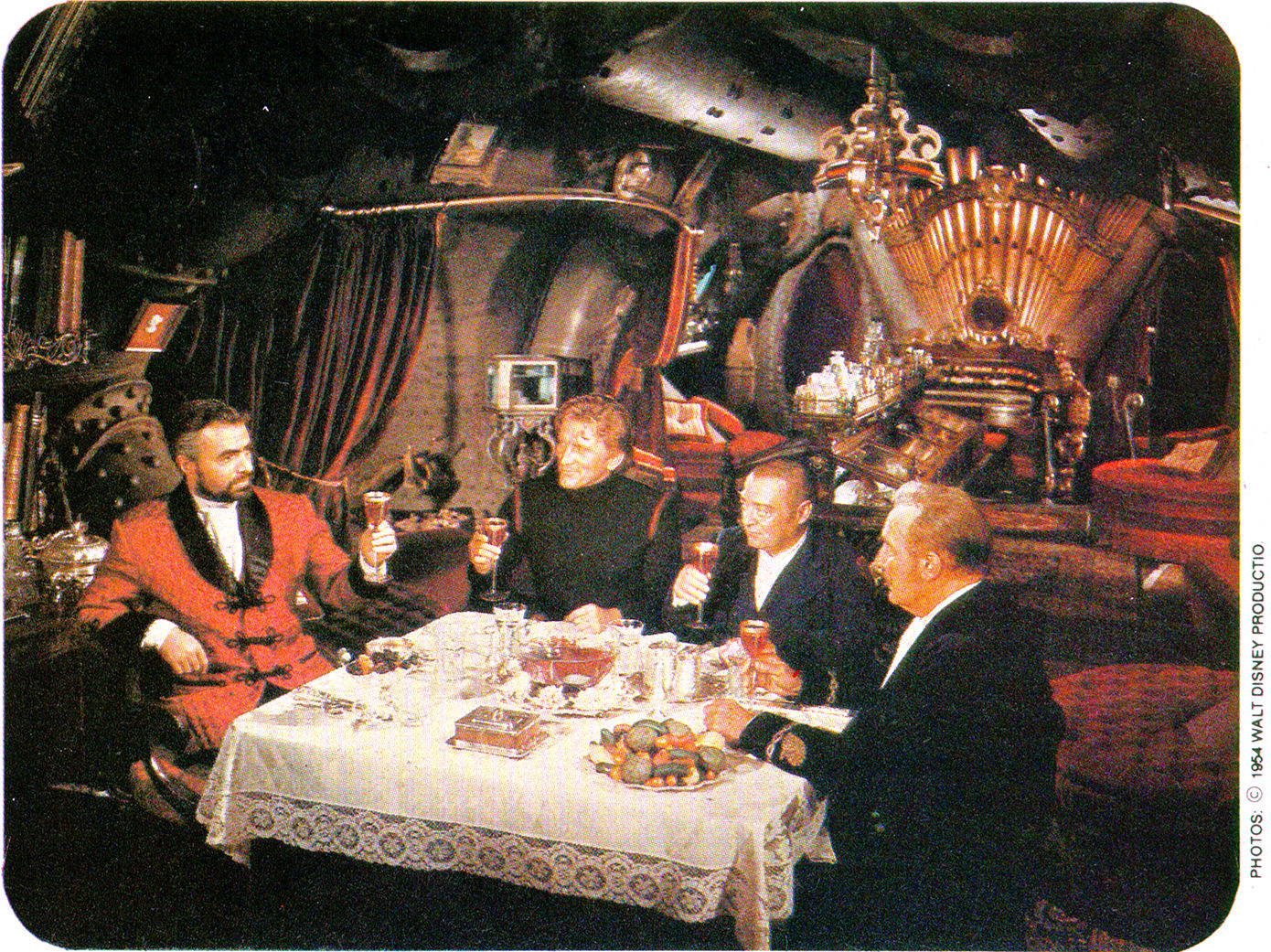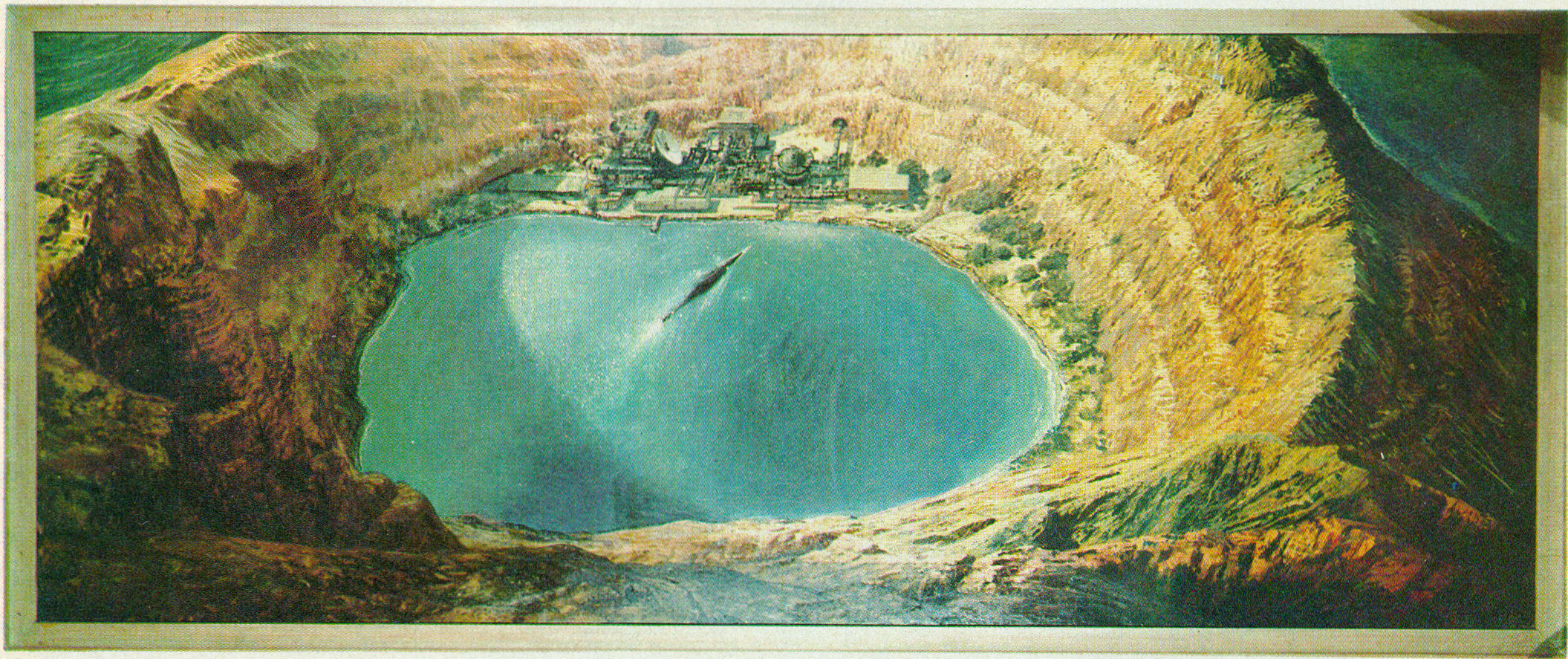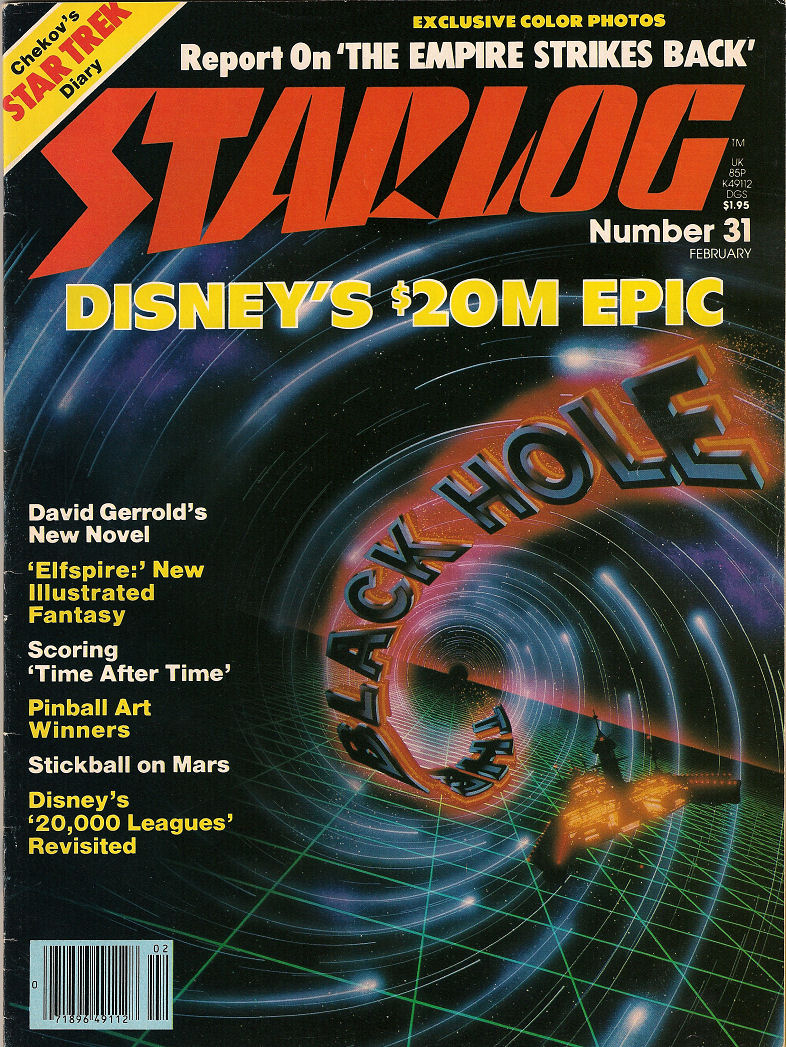another 10 to bring them
up.
To make certain that the time underwater
would be used to the fullest, every scene was
first diagrammed on a blackboard and then
rehearsed "dry," either on the boat or on
land, until cast and crew alike knew each
gesture and each step that would be made.
The burial sequence, which required 42 men
in the water simultaneously, took two days to
plan and three days to shoot.
Certain underwater sequences, however,
had to be shot under very controlled condi-
tions in a studio tank. Accordingly, Stage #3
was constructed at Disney's Burbank studios.
The stage houses an enormous 90' X 165'
tank, which ranges in depth from three to 12
feet.
Nemo's "Nautilus"
The design of the Nautilus, itself, however,
proved to be one of the most interesting.
challenges of the movie. "Jules Verne," ex-
plains Goff, "while foreseeing brilliantly the
atomic submarine of today, did not at that
time invent the periscope, the torpedo tube or
sonar. He did not prophesy closed-circuit
television. "
In a way, it was the personality of Nemo
that determined a good deal of the design.
"According to Verne," Goff continues, "if
Nemo wanted to see what was happening on
the surface, he simply poked the glass ports of
the wheel house out of the depths and took a
direct look. Nor would it have been true to
Captain Nemo's nature to skulk along and
fire an armed torpedo at his enemy. He risked
his vessel and himself and crew by ramming
the enemy at frightening speed. If he wanted
to study the marvels of life beneath the sur-
face, he reclined in his elegant bay window
lounge and passed the hours studying the
marine life outside of his luxurious salon.
These items dictated much of the direction of
my design."
Faithful to the book, the main lounge of |

Captain Nemo introduces
such undersea delicacies as filet of seasnake, unborn octopus. |
the Nautilus had to contain a
pipe organ, a
library, rare paintings, comfortable sofas and
chairs, aquariums filled with unusual fish and
soft carpets. Though some of the furnishings
were built in the Disney shops, many of the
pieces of furniture and set dressings came
from local antique shops. Sometimes the
hunt for Victorian furnishings for the sub-
marine brought startled looks of wonder
from the shop owners. Goff explains: "At
the time, I owned my own boat. One Sunday
afternoon I went browsing through antique
stores with my wife instead of going out on
my boat. It seemed appropriate to be looking
for Captain Nemo's set dressings, while wear-
ing my captain's cap. One shop had these
bronze dolphins on display. I called my wife
over to look at them. 'What would you do
|
with them?' she asked. 'For my
submarine
... ' I said. 'You know, when you walk
around the edge where the big davenport is by
the viewport? Well, I need something right at
the edge that you can put your hand on or a
chain across. And if I need it for the viewport
on the other side, we can make castings of
them!' Well, at that point I happened to look
up-at a number of open-mouthed people
who were listening in gaping wonder to the
explanation of my submarine's furnishings."
The sets for the interior cabins of the
Nautilus were built exactly to scale, with ceil-
ings. Though this technique heightened the il-
lusion of being underwater and added to the
reality of the film, it meant that many of
Nautilus cabins measured a scant 8' x 10'. In-
(continued on page 60)
|
|
 |
| One of Peter
Ellenshaw's matte paintings for the film. Intended to be used as glass
shots, the paintings are about 8 feet long. |
|
58 STARLOG/February
1980 |
|

